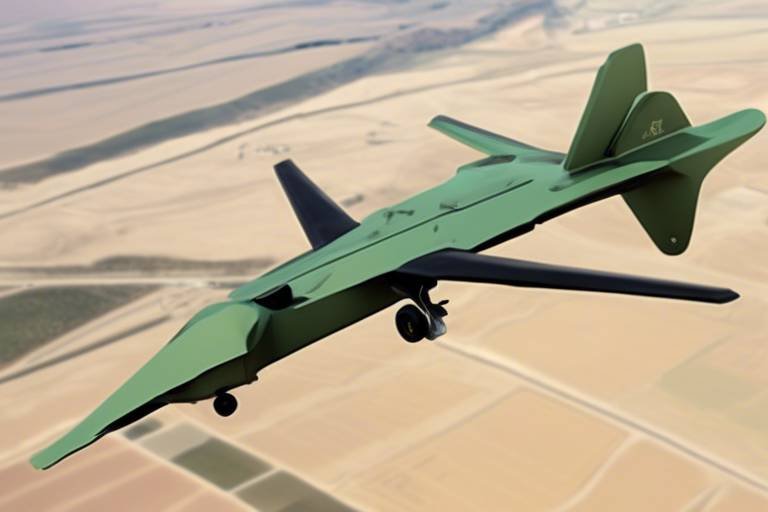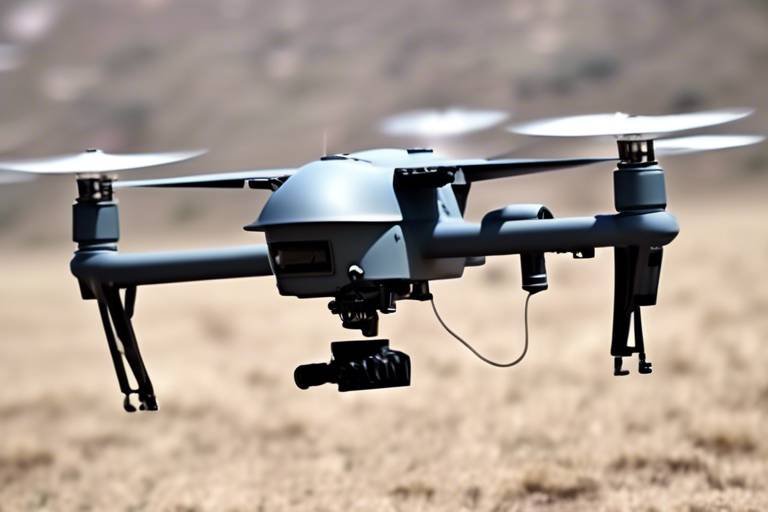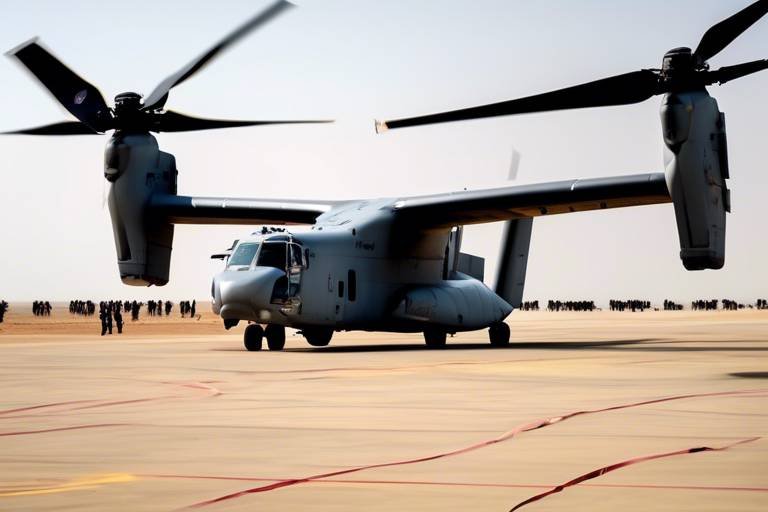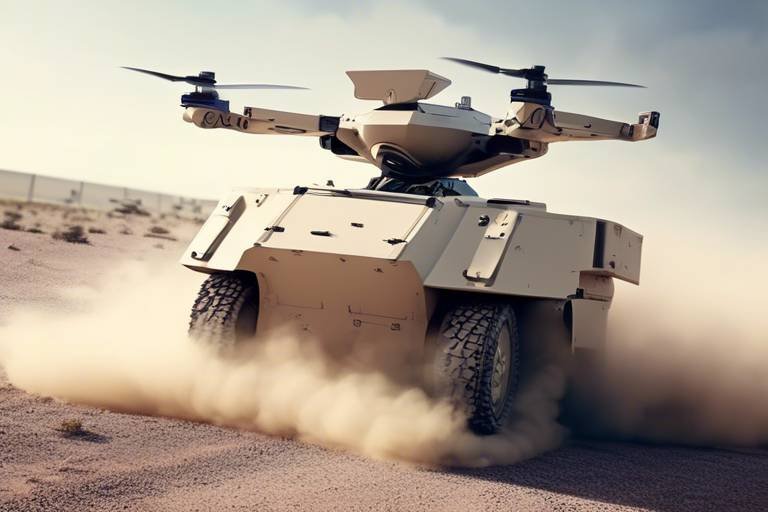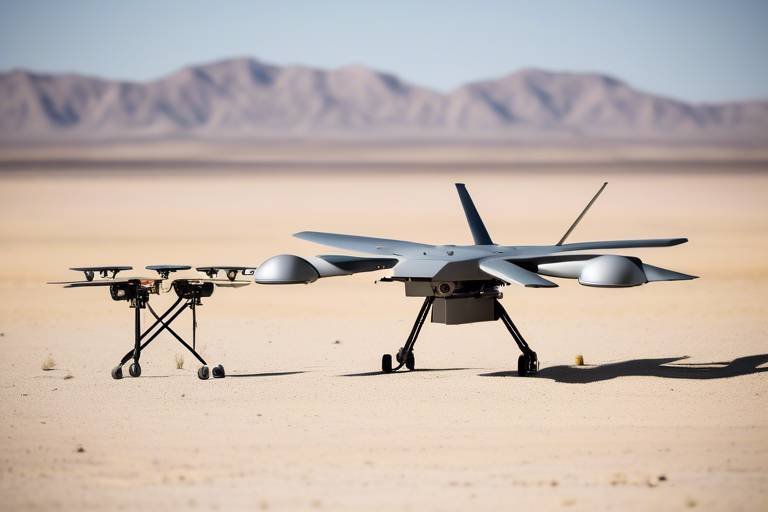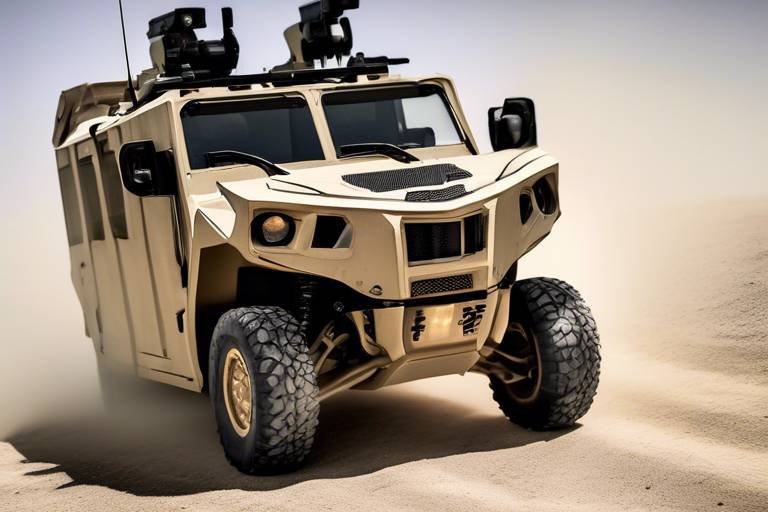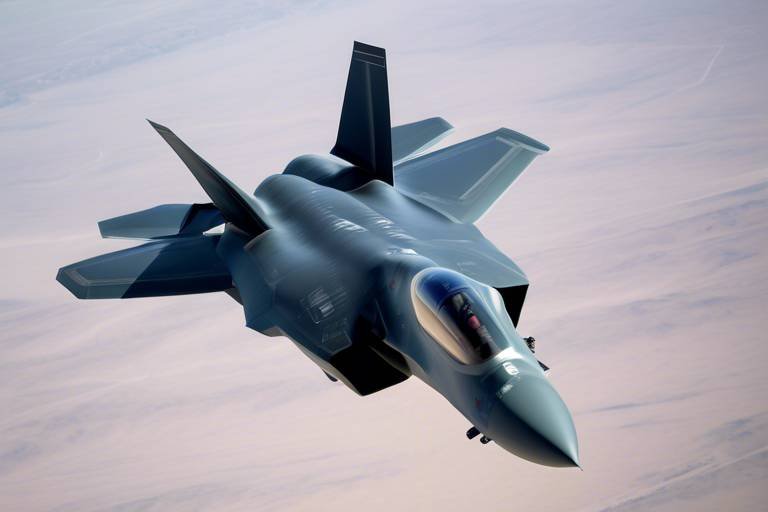Evaluating the Performance of the EAGLE UAV in Combat
The EAGLE UAV, a remarkable piece of technology, has become a game changer in modern warfare. With its cutting-edge design and operational capabilities, it has demonstrated its effectiveness in various combat scenarios. But what exactly sets it apart from other unmanned aerial vehicles (UAVs)? In this article, we will delve into the intricacies of the EAGLE UAV, examining its design, operational capabilities, advantages, limitations, and future developments. By the end, you'll have a comprehensive understanding of how the EAGLE UAV contributes to contemporary military operations.
The EAGLE UAV boasts a sleek and aerodynamic design that enhances its performance in the field. With a wingspan of approximately 15 feet and a lightweight composite structure, it is engineered for agility and speed. The UAV is powered by a high-efficiency engine that allows for extended flight times, making it ideal for long-duration missions. Key specifications include:
| Specification | Details |
|---|---|
| Wingspan | 15 feet |
| Weight | 150 lbs |
| Flight Range | Up to 100 miles |
| Endurance | Over 12 hours |
These specifications play a crucial role in the EAGLE's combat readiness, allowing it to perform a variety of missions effectively. The combination of speed, range, and endurance enables the EAGLE to gather intelligence and provide support in dynamic combat environments.
Understanding the operational capabilities of the EAGLE UAV is essential for appreciating its role in modern warfare. This UAV excels in three main areas: surveillance, reconnaissance, and combat support. Each of these functions is vital for successful military operations, providing commanders with real-time data and situational awareness.
When it comes to gathering intelligence, the EAGLE UAV truly shines. Equipped with advanced sensors and imaging technologies, it can monitor enemy movements and gather critical information from the battlefield. Imagine having eyes in the sky that can see everything, even in the dead of night or through thick foliage. That's the power of the EAGLE's surveillance capabilities.
At the heart of the EAGLE's intelligence-gathering abilities are its sophisticated sensors. These include:
- Electro-Optical/Infrared (EO/IR) cameras for day and night operations
- Radar systems for detecting moving targets
- Signal intelligence (SIGINT) equipment for intercepting communications
These technologies allow the EAGLE to operate effectively in various combat scenarios, providing invaluable data that can influence tactical decisions on the ground.
Data processing is another critical aspect of the EAGLE UAV's effectiveness. The onboard systems can analyze collected data in real-time, ensuring that commanders receive timely and actionable intelligence. This capability is akin to having a personal assistant who can sift through mountains of information and highlight what's most important. As a result, military leaders can make informed decisions quickly, enhancing the overall effectiveness of operations.
Beyond intelligence gathering, the EAGLE UAV plays a pivotal role in combat support. It provides real-time situational awareness to ground troops, helping them navigate the complexities of the battlefield. Imagine a soldier on the ground receiving live updates about enemy positions from a UAV hovering above; this kind of support can be the difference between success and failure in a mission.
When comparing the EAGLE UAV to other unmanned systems, several unique advantages emerge. Its performance, versatility, and reliability set it apart from the competition. One of the most significant advantages is its cost-effectiveness. In an era where budgets are tight, the EAGLE UAV offers a compelling return on investment.
Military procurement often hinges on cost-effectiveness, and the EAGLE UAV delivers on this front. With lower operational costs compared to similar UAVs, it allows military forces to conduct more missions without breaking the bank. This is crucial in an age where every dollar counts, making the EAGLE an attractive option for defense budgets.
The EAGLE UAV's adaptability is another key advantage. Whether deployed in arid deserts, dense forests, or urban environments, it performs exceptionally well. This versatility ensures that military forces can rely on the EAGLE in diverse combat situations, enhancing its operational effectiveness.
No system is without its limitations, and the EAGLE UAV is no exception. Technological constraints and environmental factors can pose challenges that may affect its performance in combat.
While the EAGLE UAV is equipped with advanced technologies, certain constraints can hinder its effectiveness. For instance, the range of its sensors may limit its ability to gather intelligence at extended distances. Additionally, software vulnerabilities can pose risks, making it essential for ongoing maintenance and updates.
Environmental factors also play a significant role in UAV performance. Adverse weather conditions, such as heavy rain or strong winds, can limit the EAGLE's operational capabilities. Moreover, challenging terrains can impact its flight stability and mission success. Understanding these limitations is crucial for effective planning and execution in the field.
The future of the EAGLE UAV looks promising, with ongoing research and development efforts aimed at enhancing its combat performance. As technology evolves, so too will the capabilities of the EAGLE, ensuring it remains a vital asset in military operations.
One of the most exciting prospects for the EAGLE UAV is its potential integration with other military systems. By collaborating with ground forces, other UAVs, and advanced weapon systems, the EAGLE can enhance operational synergy and effectiveness. This integration could lead to more coordinated and efficient missions in the future.
Next-generation technologies promise to revolutionize UAV capabilities. From artificial intelligence to advanced communication systems, these innovations could be incorporated into the EAGLE UAV, significantly enhancing its performance in future combat scenarios. Imagine a UAV that can autonomously adapt to changing battlefield conditions—this is the future we are heading towards.
Q: What is the primary role of the EAGLE UAV in combat?
A: The EAGLE UAV primarily serves as a surveillance and reconnaissance tool, providing real-time intelligence to ground forces and supporting combat operations.
Q: How does the EAGLE UAV compare to other UAVs?
A: The EAGLE UAV stands out due to its cost-effectiveness, adaptability, and advanced sensor technologies, making it a reliable choice for various military operations.
Q: What are the limitations of the EAGLE UAV?
A: Limitations include technological constraints, such as sensor range and software vulnerabilities, as well as environmental factors like adverse weather conditions.
Q: What future developments are expected for the EAGLE UAV?
A: Future developments may include integration with other military systems and the incorporation of next-generation technologies to enhance its combat capabilities.
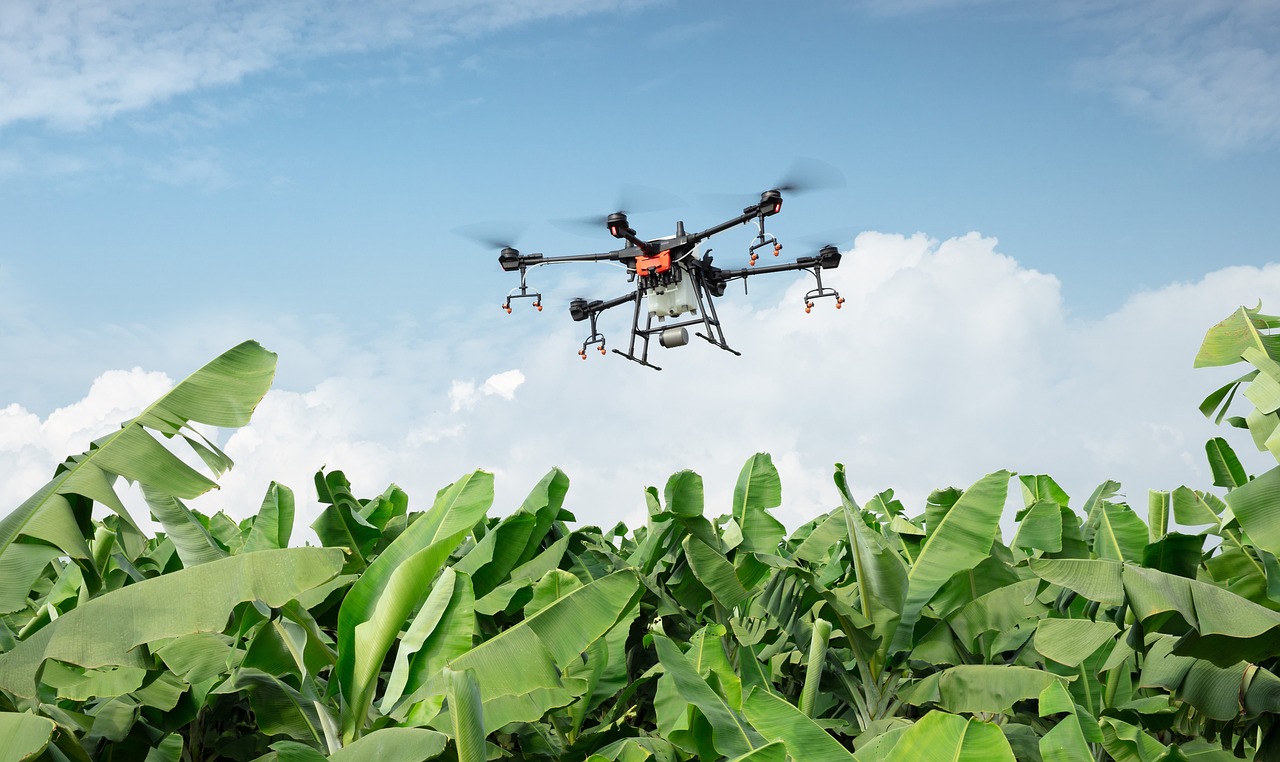
Design and Specifications
The EAGLE UAV is a marvel of modern engineering, designed to meet the rigorous demands of combat scenarios. Its sleek, aerodynamic form is not just for show; it plays a crucial role in enhancing flight efficiency and maneuverability. With a wingspan of approximately 15 feet and a weight of around 100 pounds, the EAGLE strikes a balance between size and functionality, allowing it to operate effectively in various environments.
One of the standout features of the EAGLE UAV is its advanced propulsion system, which allows for extended flight durations of up to 24 hours. This capability is particularly beneficial for long-range missions where endurance is key. The UAV is powered by a hybrid engine that combines electric and fuel sources, providing both stealth and power. This hybrid system not only reduces its acoustic signature but also enhances fuel efficiency, making it a cost-effective option for military operations.
In terms of payload capacity, the EAGLE UAV can carry an array of sophisticated sensors and equipment. It is equipped with high-resolution cameras, infrared sensors, and electronic warfare tools, all of which are essential for gathering intelligence and supporting ground troops. The UAV's modular design allows for easy reconfiguration of its payload, enabling it to adapt to different mission requirements seamlessly.
| Specification | Details |
|---|---|
| Wingspan | 15 feet |
| Weight | 100 pounds |
| Flight Duration | Up to 24 hours |
| Payload Capacity | Varied (modular design) |
| Propulsion System | Hybrid engine |
Another critical aspect of the EAGLE UAV's design is its stealth capabilities. The UAV is constructed with radar-absorbent materials that minimize its visibility to enemy radar systems, allowing it to conduct operations without detection. This feature is particularly important in modern warfare, where being unseen can mean the difference between mission success and failure. The EAGLE is also designed to operate at various altitudes, from low-level reconnaissance to high-altitude surveillance, providing versatility in its deployment.
Moreover, the user-friendly control system enhances operational efficiency. Pilots can easily manage the UAV through a sophisticated ground control station that provides real-time data and video feeds. This intuitive interface allows operators to make quick decisions based on the information gathered during missions. As technology continues to evolve, the EAGLE UAV is poised to incorporate even more advanced features, ensuring it remains a formidable asset in the arsenal of modern military forces.

Operational Capabilities
The operational capabilities of the EAGLE UAV are nothing short of remarkable, making it a vital asset in modern military operations. With a blend of advanced technology and strategic design, this unmanned aerial vehicle is tailored for a variety of missions that enhance situational awareness and combat effectiveness. From surveillance to direct combat support, the EAGLE UAV plays a multifaceted role on the battlefield. But what exactly makes it so effective? Let's dive deeper into its functionalities.
First and foremost, the EAGLE UAV is equipped for surveillance and reconnaissance, which are critical components of military operations. Its ability to gather real-time intelligence allows commanders to make informed decisions swiftly. Imagine having a bird’s eye view of the battlefield, where every movement is captured, analyzed, and relayed back to the command center. This capability not only keeps troops safe but also ensures that strategic advantages are seized before the enemy can react.
Equipped with state-of-the-art sensors, the EAGLE UAV excels in its surveillance missions. The UAV's high-resolution cameras and infrared sensors allow it to operate effectively day or night, under various weather conditions. This means that no matter the time or environment, the EAGLE can provide crucial data about enemy positions and movements. The information collected can be processed and analyzed in real-time, ensuring that military leaders have the most up-to-date intelligence at their fingertips.
Let’s take a closer look at the specific sensor technologies that empower the EAGLE UAV. Some of the key features include:
- Electro-Optical/Infrared (EO/IR) Sensors: These sensors provide detailed imagery and thermal data, which is essential for identifying targets and assessing damage.
- Radar Systems: Advanced radar capabilities allow the EAGLE to detect and track multiple targets simultaneously, even in challenging conditions.
- Signal Intelligence (SIGINT): This technology enables the UAV to intercept and analyze enemy communications, providing valuable insights into their strategies.
Once the EAGLE UAV collects data, the next step is processing and analysis. This phase is crucial for converting raw data into actionable intelligence. The UAV employs sophisticated algorithms and machine learning techniques to analyze the information in real-time. This means that not only can the EAGLE gather data, but it can also provide predictive analytics that helps military strategists anticipate enemy movements and tactics.
Furthermore, the ability to integrate this data with other military assets enhances operational effectiveness. For instance, the information gathered by the EAGLE can be shared with ground troops and command centers, ensuring that everyone is on the same page. This level of coordination is invaluable during complex operations where timing and accuracy can mean the difference between success and failure.
Beyond surveillance, the EAGLE UAV also plays a significant role in combat support. It can provide close air support to ground troops, delivering precision strikes against enemy positions while minimizing collateral damage. The UAV’s ability to loiter over a battlefield for extended periods allows it to support troops in real-time, ensuring that they have the firepower they need when they need it most.
In addition to direct combat roles, the EAGLE can also be deployed for logistics and supply missions. Imagine a situation where ground forces are cut off from supply lines; the EAGLE UAV can deliver essential supplies, such as ammunition, food, or medical supplies, directly to the troops in need. This versatility not only enhances troop morale but also significantly increases the chances of mission success.
In conclusion, the operational capabilities of the EAGLE UAV are a game-changer in modern warfare. Its advanced surveillance, reconnaissance, and combat support roles make it an indispensable tool for military forces. As technology continues to evolve, we can only expect these capabilities to expand, further solidifying the EAGLE UAV's position on the battlefield.
- What is the primary function of the EAGLE UAV? The EAGLE UAV is primarily designed for surveillance, reconnaissance, and combat support roles, providing real-time intelligence and operational support in military operations.
- How does the EAGLE UAV gather data? It utilizes advanced sensor technologies, including EO/IR sensors, radar systems, and SIGINT capabilities, to collect detailed information on enemy positions and movements.
- Can the EAGLE UAV operate in adverse weather conditions? Yes, the EAGLE UAV is designed to function effectively under various weather conditions, ensuring continuous operational capabilities.
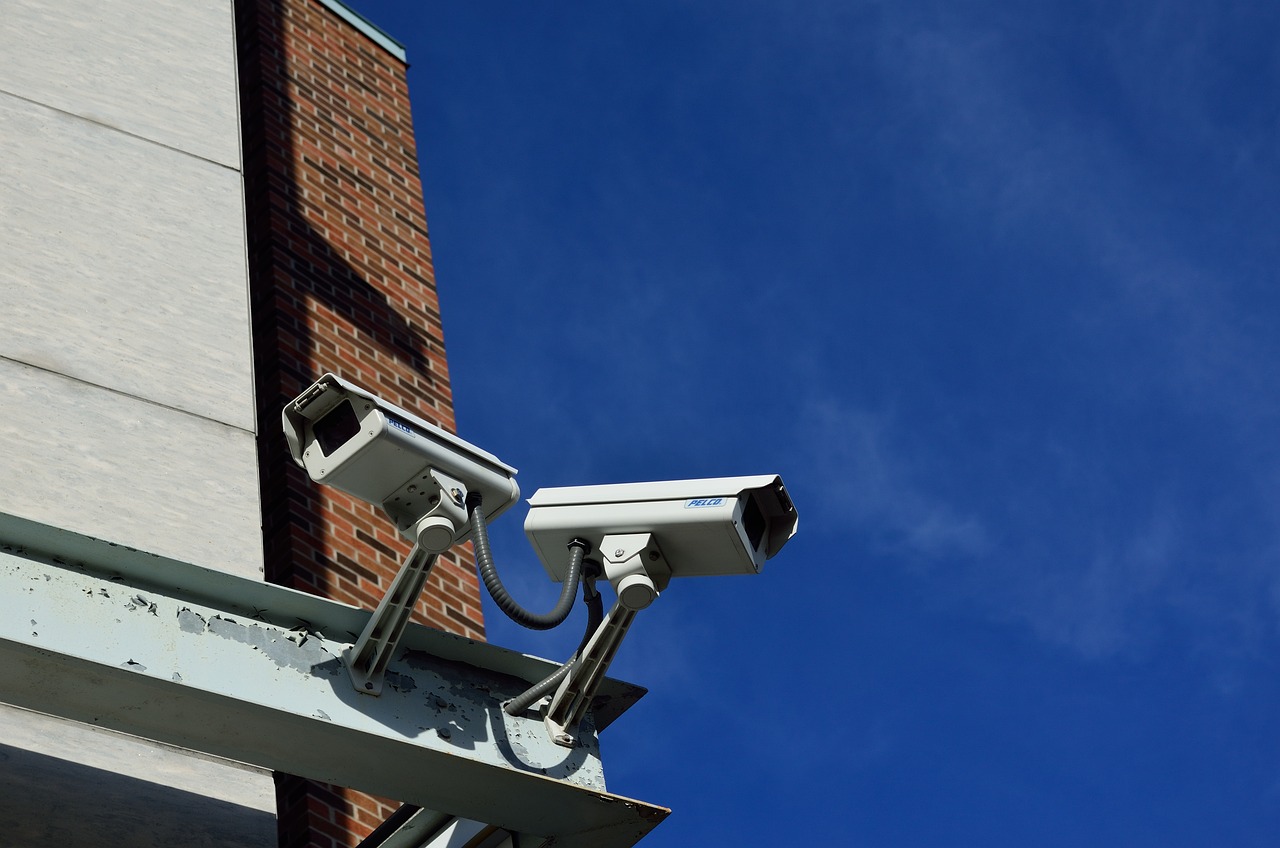
Surveillance and Reconnaissance
The EAGLE UAV is a game-changer when it comes to in combat scenarios. Imagine having a set of eyes in the sky that can not only see but also analyze and relay crucial information back to the command center in real-time. This capability is vital for modern warfare, where information is power, and the speed of decision-making can mean the difference between success and failure on the battlefield.
Equipped with state-of-the-art sensors and advanced imaging technologies, the EAGLE UAV can operate effectively in various environments, from urban landscapes to rugged terrains. Its high-resolution cameras and thermal imaging systems allow it to capture detailed images and videos, even in low-light conditions. This means that whether it's tracking troop movements or identifying potential threats, the EAGLE UAV provides comprehensive situational awareness that ground forces need to stay one step ahead.
One of the standout features of the EAGLE UAV is its ability to perform real-time data transmission. This capability ensures that the information gathered is not only accurate but also timely. Commanders can make informed decisions based on live feeds rather than relying on outdated or incomplete data. The UAV can transmit data back to the base via secure communication links, ensuring that sensitive information remains protected while still being accessible to those who need it.
Additionally, the EAGLE UAV utilizes sophisticated data fusion techniques to enhance its reconnaissance capabilities. By integrating data from various sensors, it can create a more comprehensive picture of the battlefield. This process involves analyzing inputs from its cameras, infrared sensors, and even radar systems to provide a multi-dimensional view of the operational area. The result? A more informed and strategic approach to military operations.
However, it's not just about the technology; the operational strategies employed during surveillance missions also play a crucial role. The EAGLE UAV can be deployed in covert operations, where stealth is paramount. Its low radar cross-section and quiet propulsion system allow it to fly under the radar, literally and figuratively. This stealth capability enables it to gather intelligence without alerting enemy forces, making it an invaluable asset in hostile environments.
In summary, the EAGLE UAV's prowess in surveillance and reconnaissance is a testament to its design and technological advancements. Its ability to provide real-time data, coupled with sophisticated imaging and data processing capabilities, makes it an indispensable tool for modern military operations. As the battlefield continues to evolve, the EAGLE UAV stands ready to adapt and meet the challenges of tomorrow.
- What types of sensors does the EAGLE UAV use for surveillance?
The EAGLE UAV is equipped with high-resolution cameras, thermal imaging systems, and radar sensors that allow it to gather comprehensive intelligence in various conditions. - How does the EAGLE UAV transmit data?
It uses secure communication links to transmit real-time data back to the command center, ensuring that sensitive information remains protected. - Can the EAGLE UAV operate in low-light conditions?
Yes, its thermal imaging capabilities enable it to perform effectively even in low-light environments. - What is the significance of data fusion in reconnaissance?
Data fusion enhances situational awareness by integrating information from multiple sensors, providing a more comprehensive view of the battlefield.

Sensor Technologies
The EAGLE UAV is equipped with a suite of advanced sensor technologies that significantly enhance its intelligence-gathering capabilities. These sensors are the eyes and ears of the UAV, allowing it to perform complex surveillance and reconnaissance missions in combat zones with remarkable efficiency. Imagine a hawk soaring high above, effortlessly spotting its prey; this is akin to how the EAGLE UAV utilizes its sensors to detect and analyze targets from great distances.
One of the standout features of the EAGLE UAV is its electro-optical/infrared (EO/IR) sensors. These sensors provide real-time video feeds and thermal imaging, enabling operators to monitor movements and gather critical intelligence even in low-light conditions. The ability to see both in visible light and infrared spectrum allows the EAGLE to operate effectively at any time of the day or night, making it a versatile tool on the battlefield.
In addition to EO/IR sensors, the EAGLE UAV is outfitted with synthetic aperture radar (SAR). This technology allows the UAV to create high-resolution images of the ground, regardless of weather conditions. Whether it’s cloudy, rainy, or foggy, the SAR can penetrate through these obstacles, providing crucial data that ground troops can rely on. This capability is particularly vital in modern warfare, where understanding the battlefield environment can be the difference between success and failure.
Moreover, the EAGLE UAV is integrated with signals intelligence (SIGINT) capabilities that allow it to intercept and analyze enemy communications. This feature not only aids in gathering intelligence but also helps in electronic warfare, giving military commanders an edge in understanding enemy movements and intentions. The combination of these sensor technologies makes the EAGLE UAV a formidable asset in any military operation.
To summarize, the sensor technologies of the EAGLE UAV can be categorized as follows:
| Sensor Type | Capabilities | Operational Benefits |
|---|---|---|
| EO/IR Sensors | Real-time video and thermal imaging | Effective in low-light conditions |
| Synthetic Aperture Radar (SAR) | High-resolution ground imaging | Operates in adverse weather |
| Signals Intelligence (SIGINT) | Intercepts and analyzes communications | Enhances understanding of enemy actions |
In conclusion, the EAGLE UAV's sensor technologies not only enhance its operational effectiveness but also provide military forces with a strategic advantage in combat scenarios. As technology continues to evolve, we can expect further enhancements in these sensor capabilities, making the EAGLE UAV an even more indispensable tool in modern warfare.
- What types of sensors are used in the EAGLE UAV? The EAGLE UAV utilizes EO/IR sensors, synthetic aperture radar (SAR), and signals intelligence (SIGINT) capabilities.
- How does the EAGLE UAV perform in low-light conditions? The EO/IR sensors enable the UAV to effectively gather intelligence in low-light and nighttime conditions.
- Can the EAGLE UAV operate in adverse weather? Yes, the SAR technology allows the UAV to create high-resolution images regardless of weather conditions.
- What is the role of SIGINT in the EAGLE UAV? SIGINT capabilities help intercept and analyze enemy communications, providing valuable intelligence for military operations.

Data Processing and Analysis
The effectiveness of the EAGLE UAV in combat scenarios is significantly enhanced by its sophisticated data processing and analysis capabilities. In the heat of battle, information is king, and the EAGLE UAV excels at transforming raw data into actionable intelligence. Imagine being on a chessboard where every move counts, and you need to predict your opponent's strategy. The EAGLE UAV serves a similar purpose on the battlefield, allowing military operators to stay one step ahead.
At the core of its operational prowess lies a robust data processing system that integrates various data streams. This system collects information from its advanced sensors, which include high-resolution cameras and thermal imaging devices. The data is then processed in real-time, enabling commanders to make informed decisions swiftly. For instance, when the EAGLE UAV identifies enemy positions, it can relay this information almost instantaneously, allowing ground troops to adjust their strategies accordingly.
Moreover, the EAGLE UAV employs sophisticated algorithms that enhance its analytical capabilities. These algorithms are designed to filter out noise and focus on relevant data, ensuring that military personnel receive only the most critical information. This is akin to having a skilled editor sift through a mountain of documents to find the most pertinent facts. The result is a streamlined flow of intelligence that can drastically improve mission outcomes.
In addition to real-time processing, the EAGLE UAV also features a data storage system capable of retaining vast amounts of information for post-mission analysis. This archival capability is essential for learning and adapting strategies based on previous encounters. Military analysts can review historical data to identify patterns, assess the effectiveness of tactics, and refine future operations. Think of it as a sports team reviewing game footage to understand weaknesses and strengths; the same principle applies to military strategy.
To illustrate the EAGLE UAV's data processing capabilities, consider the following table that summarizes its key features:
| Feature | Description |
|---|---|
| Real-time Data Processing | Instantaneous analysis of incoming data from sensors to support decision-making. |
| Advanced Algorithms | Utilizes machine learning to filter and analyze data efficiently. |
| Data Storage | Capable of storing extensive mission data for future analysis and learning. |
| Integration with Command Systems | Seamlessly connects with military command systems for enhanced operational coordination. |
In conclusion, the EAGLE UAV's data processing and analysis capabilities are vital components of its operational effectiveness in combat. By turning data into actionable intelligence, it empowers military forces to make swift, informed decisions that can alter the course of engagements. As technology continues to evolve, the EAGLE UAV's data handling prowess will undoubtedly become even more sophisticated, further enhancing its role in modern warfare.
- What types of data can the EAGLE UAV collect? The EAGLE UAV can collect various types of data, including visual imagery, thermal data, and electronic signals.
- How does real-time data processing benefit military operations? Real-time data processing allows for immediate decision-making, which is crucial in fast-paced combat situations.
- Can the EAGLE UAV store data for future use? Yes, the EAGLE UAV has a robust data storage system that retains mission data for post-mission analysis.
- What role do algorithms play in data analysis? Algorithms help filter and analyze data efficiently, ensuring that only the most relevant information is presented to military personnel.

Combat Support Roles
The EAGLE UAV is not just a high-flying observer; it’s a vital combat support asset that enhances the effectiveness of ground troops and other military units. Imagine being a soldier on the front lines, and suddenly, you have an eye in the sky that can provide real-time intelligence and support. This is where the EAGLE shines, acting as a force multiplier in various combat scenarios. Its ability to operate autonomously or under direct control allows it to adapt to the dynamic nature of battlefield operations, providing critical support when and where it’s needed most.
One of the key roles of the EAGLE UAV in combat support is its capacity to conduct target acquisition. Equipped with advanced imaging systems, the UAV can identify and locate enemy positions, which is crucial for planning effective strikes. This capability not only reduces the risk to personnel but also increases the chances of mission success. The EAGLE’s sensors can detect movement and changes in the battlefield environment, allowing commanders to make informed decisions rapidly.
Furthermore, the EAGLE UAV enhances communication on the battlefield. It can serve as a relay point, connecting troops with command centers and other units. This is particularly important during operations in challenging terrains where traditional communication methods may fail. By providing a stable communication link, the EAGLE ensures that troops are never out of the loop, which is vital for coordinated attacks and defensive maneuvers.
In addition to these capabilities, the EAGLE UAV can also assist in logistics and supply chain management. Imagine needing supplies in a remote location; the EAGLE can help assess the situation on the ground, ensuring that resources are delivered efficiently and safely. This logistical support is essential in maintaining the operational readiness of ground forces, especially in prolonged engagements.
To highlight the multifaceted roles of the EAGLE UAV in combat support, here’s a brief overview:
| Combat Support Role | Description |
|---|---|
| Target Acquisition | Identifies and locates enemy positions for effective strikes. |
| Communication Relay | Facilitates communication between troops and command centers. |
| Logistics Support | Assesses ground conditions for efficient supply delivery. |
In conclusion, the EAGLE UAV's combat support roles are indispensable in modern warfare. It not only enhances the operational effectiveness of military units but also ensures that soldiers on the ground have the best possible support. With its advanced technology and versatile capabilities, the EAGLE UAV stands out as a crucial element in today's combat landscape.
- What makes the EAGLE UAV unique in combat support?
The EAGLE UAV combines advanced surveillance capabilities with communication and logistical support, making it a versatile tool on the battlefield. - Can the EAGLE UAV operate autonomously?
Yes, the EAGLE UAV can operate autonomously or under direct control, allowing for flexibility in various combat scenarios. - How does the EAGLE UAV enhance communication?
It serves as a relay point, connecting troops with command centers, which is crucial for coordinated operations. - What types of sensors does the EAGLE UAV use?
The EAGLE UAV is equipped with advanced imaging systems that allow for effective target acquisition and reconnaissance.

Advantages Over Other UAVs
The EAGLE UAV stands out in the crowded field of unmanned aerial vehicles (UAVs), boasting a range of advantages that make it a formidable asset in modern combat scenarios. One of the most significant benefits of the EAGLE is its performance efficiency. Unlike many of its counterparts, the EAGLE is designed to operate effectively in both high-altitude and low-altitude environments, allowing it to adapt seamlessly to various operational requirements. This versatility is crucial in dynamic combat situations where the battlefield can change rapidly.
Another key advantage is the EAGLE's advanced sensor suite. Equipped with state-of-the-art sensors, the UAV excels in intelligence gathering, providing real-time data that is vital for mission success. The combination of electro-optical and infrared sensors enables the EAGLE to operate effectively under a range of conditions, from bright daylight to complete darkness. This capability not only enhances situational awareness but also contributes to more informed decision-making by military commanders.
Moreover, the EAGLE UAV is recognized for its cost-effectiveness. When comparing operational costs with the benefits it delivers, the EAGLE often comes out on top. Its maintenance requirements are lower than those of many traditional aircraft, which translates into significant savings for military budgets. This cost efficiency does not compromise its performance; rather, it enhances the overall value proposition, making the EAGLE an attractive option for military procurement.
In addition to its operational prowess, the EAGLE UAV is designed with adaptability in mind. Whether deployed in urban environments, mountainous terrains, or coastal areas, the EAGLE can adjust its flight patterns and mission profiles accordingly. This adaptability is essential for ensuring that the UAV can fulfill its role in diverse combat scenarios, meeting the unique challenges posed by different landscapes.
To illustrate the comparative advantages of the EAGLE UAV, consider the following table that highlights its key features against other UAVs:
| Feature | EAGLE UAV | Competitor A | Competitor B |
|---|---|---|---|
| Altitude Range | High & Low | High Only | Low Only |
| Sensor Suite | Advanced EO/IR | Basic Sensors | Moderate Sensors |
| Operational Cost | Low | Moderate | High |
| Adaptability | High | Moderate | Low |
Ultimately, the EAGLE UAV's blend of performance, cost-effectiveness, and adaptability positions it as a leader in the UAV market. Its unique advantages not only enhance its operational effectiveness but also ensure that it remains a vital component of modern military strategies. As the landscape of warfare continues to evolve, the EAGLE UAV is poised to meet the challenges of the future head-on.
- What makes the EAGLE UAV different from other UAVs? The EAGLE UAV is distinguished by its advanced sensor suite, cost-effectiveness, and adaptability to various environments.
- How does the EAGLE UAV perform in adverse weather conditions? The EAGLE UAV is designed to operate effectively in diverse weather conditions, thanks to its robust engineering and advanced sensor technologies.
- What are the operational costs associated with the EAGLE UAV? The EAGLE UAV has lower operational costs compared to many traditional aircraft, making it a cost-effective solution for military operations.
- Can the EAGLE UAV be integrated with other military systems? Yes, the EAGLE UAV is designed for integration with various military systems, enhancing its operational synergy.

Cost-Effectiveness
The EAGLE UAV stands out in the realm of military drones, not just for its capabilities but also for its . In an era where military budgets are often stretched thin, the ability to deliver high performance without exorbitant costs is crucial. When evaluating the cost-effectiveness of the EAGLE UAV, several key factors come into play.
First and foremost, the initial acquisition cost of the EAGLE UAV is competitive compared to its counterparts. While some UAVs might offer advanced features, they often come with a hefty price tag that can deter military procurement. The EAGLE UAV, however, balances affordability with state-of-the-art technology, making it an attractive option for military forces worldwide.
Moreover, the operational costs associated with the EAGLE UAV are significantly lower than those of many other UAVs on the market. This includes maintenance, training, and fuel costs. For instance, the EAGLE UAV is designed for easy maintenance, which reduces downtime and ensures that it remains operational when needed most. This reliability translates to fewer resources spent on repairs and upgrades, allowing military units to allocate their budgets more efficiently.
To further illustrate its cost-effectiveness, consider the following table that compares the EAGLE UAV with two other popular UAVs in the market:
| Feature | EAGLE UAV | Competitor A | Competitor B |
|---|---|---|---|
| Initial Acquisition Cost | $1.5 million | $2.0 million | $2.5 million |
| Annual Operational Cost | $300,000 | $500,000 | $600,000 |
| Maintenance Downtime | 10% | 15% | 20% |
As shown in the table, the EAGLE UAV not only has a lower initial acquisition cost but also boasts significantly reduced annual operational costs and maintenance downtime. This means that military units can maximize their return on investment while ensuring that their resources are used effectively.
Additionally, the EAGLE UAV's versatility in various operational roles allows it to serve multiple functions, from surveillance to combat support, without the need for additional specialized drones. This adaptability means that military forces can achieve a broader range of objectives with fewer assets, further enhancing its cost-effectiveness.
In conclusion, the EAGLE UAV exemplifies a balance of performance and affordability, making it a smart choice for military organizations looking to enhance their operational capabilities without breaking the bank. Its lower acquisition and operational costs, combined with its multifunctional capabilities, position it as a leader in the field of cost-effective UAV solutions.
- What makes the EAGLE UAV cost-effective? The EAGLE UAV combines a competitive initial acquisition cost with lower operational and maintenance costs, making it an economical choice for military procurement.
- How does the EAGLE UAV compare to other UAVs? The EAGLE UAV offers a better balance of affordability and performance compared to many competitors, with lower costs and versatile operational capabilities.
- Can the EAGLE UAV perform multiple roles? Yes, the EAGLE UAV is designed to carry out various missions, including surveillance, reconnaissance, and combat support, without the need for multiple specialized drones.
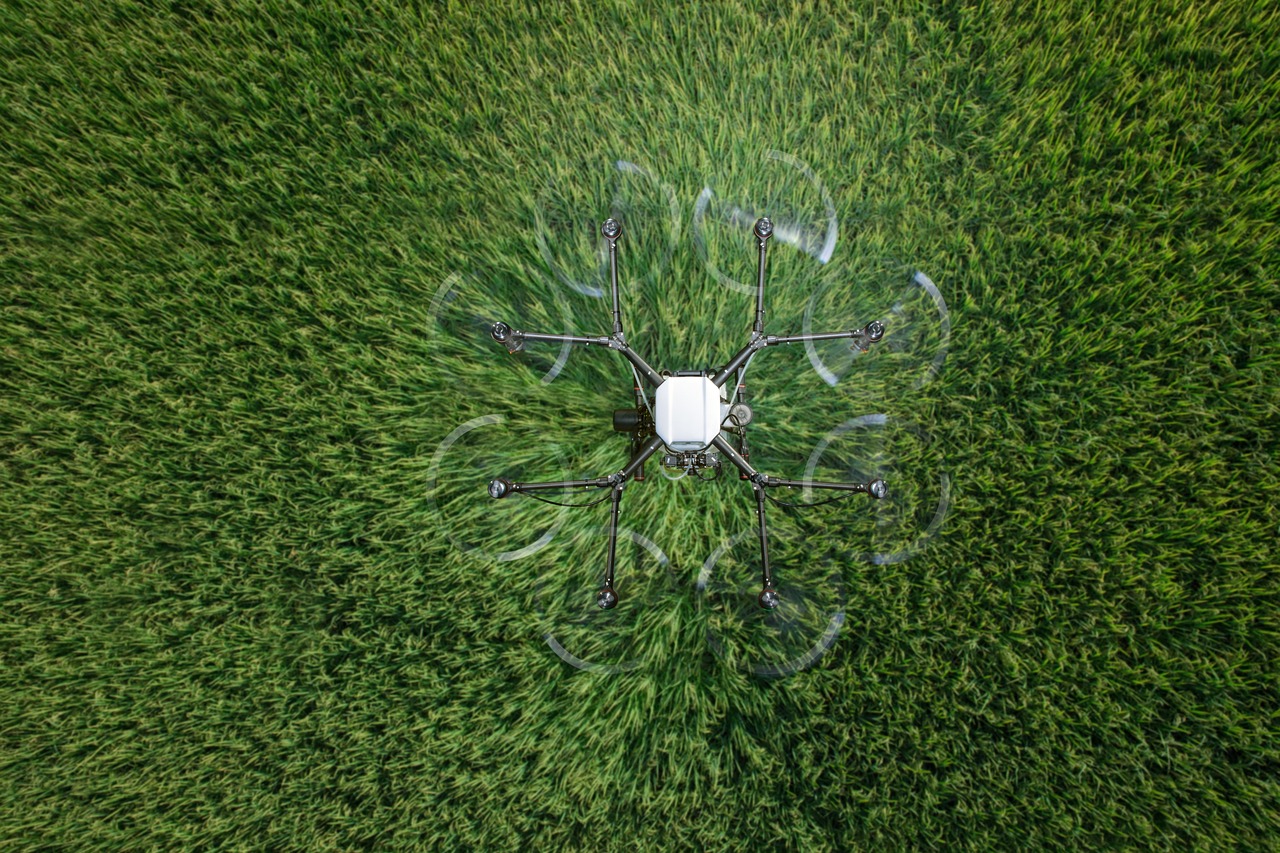
Adaptability in Various Environments
The EAGLE UAV is designed with an impressive level of adaptability, making it a formidable asset in various combat environments. Whether it’s the arid deserts of the Middle East, the dense forests of Southeast Asia, or the rugged mountains of Afghanistan, the EAGLE can seamlessly integrate into different operational theaters. This versatility is not just a feature; it’s a necessity in modern warfare, where the battlefield can change dramatically from one mission to the next.
One of the key factors contributing to the EAGLE's adaptability is its modular design. This allows for quick modifications and upgrades, enabling the UAV to be equipped with different payloads tailored for specific missions. For instance, in a reconnaissance role, the EAGLE can be outfitted with high-resolution cameras and advanced sensors, while in combat support, it can carry precision-guided munitions. This flexibility ensures that the UAV remains relevant and effective, regardless of the mission requirements.
Moreover, the EAGLE UAV is equipped with sophisticated navigation systems that allow it to operate in a variety of terrains. Its terrain-following capabilities enable it to fly low and avoid detection while gathering critical intelligence. This is particularly advantageous in environments where traditional aircraft may struggle due to obstacles or hostile defenses. The UAV's ability to adapt its flight profile based on real-time environmental data is a game-changer, enhancing its survivability and mission success rates.
In addition to physical adaptability, the EAGLE UAV also showcases remarkable technological versatility. It can integrate with various military platforms and systems, including ground control stations and other UAVs, to create a cohesive operational framework. This interoperability is crucial, as it allows for a more synchronized approach to combat operations, where real-time data sharing can significantly improve decision-making processes.
To illustrate its adaptability, consider the following table that summarizes the EAGLE UAV's performance in different environments:
| Environment | Adaptability Features | Operational Advantages |
|---|---|---|
| Desert | Heat-resistant materials, dust filtration systems | Enhanced endurance and reliability in extreme temperatures |
| Forest | Advanced camouflage technology, low-noise operation | Stealth capabilities for covert surveillance missions |
| Mountain | High-altitude flight capabilities, rugged design | Effective in challenging terrains with limited accessibility |
| Urban | GPS-denied navigation systems, obstacle avoidance | Precision strikes and intelligence gathering in complex landscapes |
In conclusion, the EAGLE UAV's adaptability in various environments is a testament to its advanced engineering and design. Its ability to operate effectively in diverse conditions not only enhances its operational effectiveness but also provides military forces with a reliable tool for modern warfare. As combat scenarios continue to evolve, the EAGLE UAV stands ready to meet the challenges head-on, proving that adaptability is indeed the name of the game in today’s military landscape.
- What makes the EAGLE UAV suitable for different environments?
The EAGLE UAV is designed with a modular architecture, allowing it to be equipped with various payloads and advanced navigation systems that adapt to different terrains and conditions.
- Can the EAGLE UAV operate in urban settings?
Yes, the EAGLE UAV is equipped with GPS-denied navigation systems and obstacle avoidance technologies, making it capable of performing missions in urban environments.
- How does the EAGLE UAV ensure stealth in forested areas?
It utilizes advanced camouflage technology and operates quietly to avoid detection while conducting surveillance and reconnaissance missions.

Limitations and Challenges
While the EAGLE UAV boasts impressive capabilities, it is essential to recognize that no system is without its limitations. Understanding these challenges is crucial for military strategists and operators alike. One of the primary issues faced by the EAGLE UAV is its technological constraints. Despite its advanced design, certain limitations in its technology can hinder its effectiveness in various combat scenarios. For instance, the UAV may struggle with data transmission in heavily contested environments where electronic warfare is prevalent. This can lead to delays in information relay, ultimately affecting mission outcomes.
Furthermore, the EAGLE UAV's reliance on sophisticated software and systems means that any malfunction or cyber threat can severely compromise its operational capabilities. Imagine sending a soldier into battle without reliable communication; the same principle applies to the EAGLE. If its systems fail, it could become a liability instead of an asset.
Another significant challenge is the environmental factors that can impact the UAV's performance. Weather conditions play a pivotal role in UAV operations. For example, high winds, heavy rain, or extreme temperatures can limit the EAGLE UAV's flight capabilities and sensor effectiveness. In some cases, these conditions may even ground the UAV entirely, rendering it useless when it is needed the most. The table below outlines some of the environmental factors and their effects on UAV operations:
| Environmental Factor | Effect on EAGLE UAV |
|---|---|
| High Winds | Reduced stability and control |
| Heavy Rain | Sensor malfunction and visibility issues |
| Extreme Temperatures | Impact on battery life and electronic systems |
Additionally, the operational challenges faced by the EAGLE UAV cannot be overlooked. In combat scenarios, the UAV operates in conjunction with ground troops and other military assets. Coordination between these units is vital, and any miscommunication can lead to catastrophic results. The complexity of modern warfare means that the EAGLE must adapt quickly to changing battle conditions, which can be a daunting task.
Lastly, the cost of maintenance and operational readiness can also pose challenges for the EAGLE UAV. While its initial procurement may be justified by its capabilities, ongoing maintenance and the need for skilled operators can strain military budgets. This financial aspect is critical, especially for countries with limited defense spending, as they must weigh the benefits of the EAGLE against other potential investments.
- What are the main limitations of the EAGLE UAV?
The EAGLE UAV faces technological constraints, environmental challenges, operational complexities, and high maintenance costs that can affect its performance in combat.
- How do environmental factors impact the EAGLE UAV?
Weather conditions such as high winds, heavy rain, and extreme temperatures can hinder flight stability, sensor effectiveness, and overall operational capacity.
- Is the EAGLE UAV cost-effective?
While the initial costs may be justified by its capabilities, ongoing maintenance and the need for skilled operators can add to the overall expenses, making cost-effectiveness a significant consideration.

Technological Constraints
The EAGLE UAV, while a formidable asset in modern combat scenarios, is not without its . These limitations can significantly impact its operational effectiveness and overall mission success. One of the primary challenges faced by the EAGLE UAV is its reliance on advanced technology that, while innovative, may not always perform optimally under certain conditions. For instance, the UAV's sophisticated sensor systems, which are designed for high-resolution surveillance, can be hampered by factors such as interference from electronic warfare tactics or adverse weather conditions.
Moreover, the EAGLE UAV's communication systems, crucial for real-time data transmission and command execution, can face vulnerabilities. In combat situations, maintaining a secure and stable communication link is essential. However, potential issues like signal jamming or loss of connectivity can hinder the UAV's ability to relay critical information back to operators, thereby compromising mission objectives. The following table summarizes some of the key technological constraints affecting the EAGLE UAV:
| Constraint | Description |
|---|---|
| Sensor Limitations | Performance can degrade in adverse weather or under electronic interference. |
| Communication Vulnerabilities | Risk of signal jamming and loss of connectivity during operations. |
| Payload Restrictions | Limited capacity for additional equipment or weaponry due to weight constraints. |
| Software Dependencies | Reliance on software updates can lead to operational delays if issues arise. |
Another significant constraint is the UAV's payload capacity. While the EAGLE UAV is equipped with advanced sensors for surveillance and reconnaissance, its ability to carry additional equipment or weaponry is limited. This constraint can restrict the versatility of the UAV in certain combat scenarios, where having multiple capabilities on a single platform could be advantageous. Furthermore, the need for software updates and maintenance can lead to operational delays, especially if unforeseen issues arise during critical missions.
In summary, while the EAGLE UAV boasts impressive capabilities, it is essential to recognize and address these technological constraints. Understanding these limitations enables military planners and operators to devise strategies that mitigate risks and enhance the UAV's effectiveness in combat scenarios. As technology continues to evolve, ongoing research and development are crucial to overcoming these challenges and ensuring that the EAGLE UAV remains a vital asset in future military operations.
- What are the primary technological constraints of the EAGLE UAV?
The primary constraints include sensor limitations, communication vulnerabilities, payload restrictions, and software dependencies. - How do weather conditions affect the EAGLE UAV's performance?
Adverse weather can degrade sensor performance and impact the UAV's ability to operate effectively. - Can the EAGLE UAV be upgraded to overcome its technological constraints?
Yes, ongoing research and development efforts aim to enhance the UAV's capabilities and address its limitations.
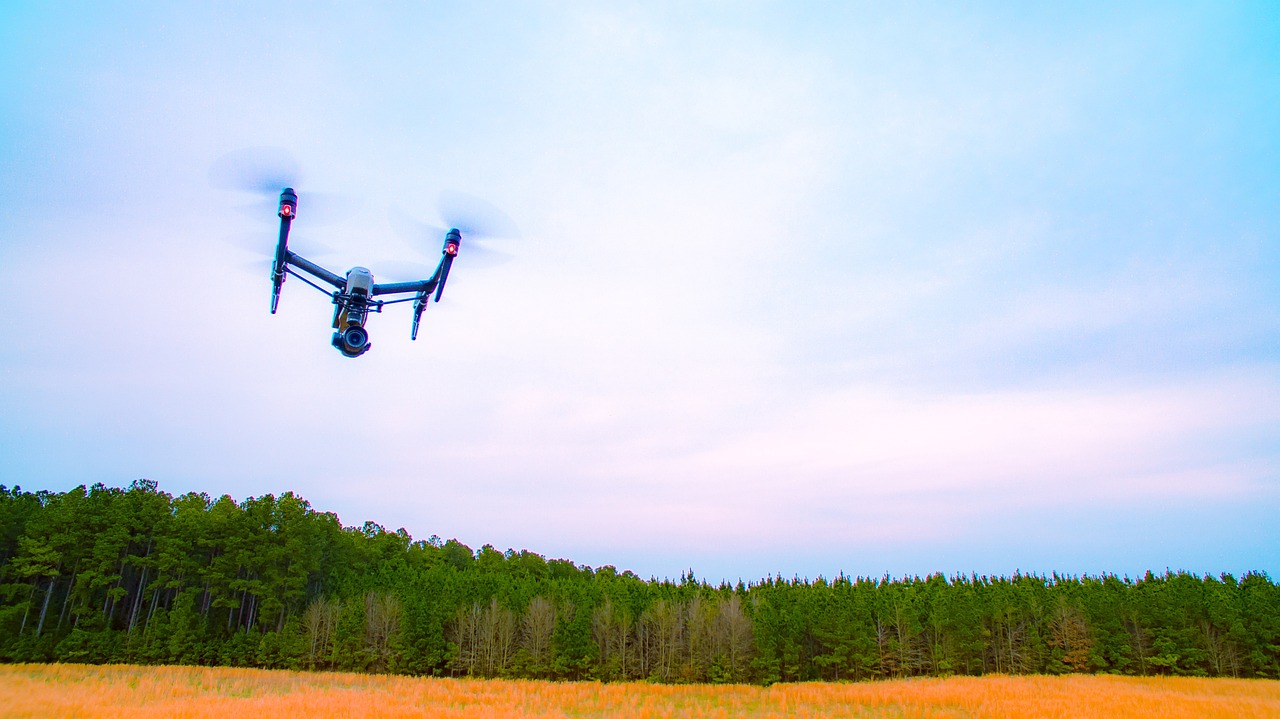
Environmental Factors
The performance of the EAGLE UAV is significantly influenced by various environmental factors that can either enhance or hinder its operational capabilities. Understanding these factors is crucial for military strategists and operators alike, as they can directly impact mission outcomes. For instance, weather conditions such as rain, fog, or high winds can affect the UAV's stability and sensor effectiveness. Imagine trying to fly a kite on a windy day; too much wind can make it uncontrollable, just as adverse weather can challenge the EAGLE's flight stability.
Additionally, terrain plays a vital role in the UAV's effectiveness. The EAGLE is designed to operate in diverse environments, from rugged mountains to urban landscapes. However, each terrain presents its own set of challenges. In mountainous regions, for example, the UAV must navigate through varying altitudes and potential obstacles, while in urban areas, it must contend with buildings and other structures that can obstruct signals and visibility. This adaptability is crucial, but it also requires meticulous planning and consideration of environmental factors.
To illustrate the impact of these environmental factors, consider the following table that summarizes how various conditions can affect the EAGLE UAV's performance:
| Environmental Factor | Impact on EAGLE UAV |
|---|---|
| Weather Conditions | Reduced sensor accuracy, flight instability, and potential mission delays. |
| Terrain Type | Increased navigation challenges and potential signal interference. |
| Temperature Extremes | Battery performance may decrease, affecting flight time and operational range. |
| Humidity Levels | Can affect sensor performance and overall UAV functionality. |
Moreover, the EAGLE UAV's sensors and technologies are designed to mitigate some of these environmental challenges. For example, advanced radar systems can help navigate through fog, while thermal imaging can be invaluable in low-visibility conditions. However, it's essential to recognize that no technology is infallible. Operators must remain vigilant and adaptable, ready to adjust their strategies based on real-time environmental assessments.
In conclusion, while the EAGLE UAV is equipped with cutting-edge technology to handle various environmental challenges, it is not immune to their effects. Understanding and preparing for these factors is crucial for maximizing the UAV's effectiveness in combat scenarios. Acknowledging the interplay between technology and environment can lead to better mission planning and execution, ultimately enhancing the operational success of the EAGLE UAV.
- What are the primary environmental factors that affect the EAGLE UAV's performance?
The primary factors include weather conditions, terrain type, temperature extremes, and humidity levels. - How does weather impact the UAV's sensors?
Adverse weather can reduce sensor accuracy and flight stability, potentially leading to mission delays. - Can the EAGLE UAV operate in urban environments?
Yes, the EAGLE UAV is designed to adapt to various terrains, including urban landscapes, although it faces unique challenges in such settings. - What technologies help mitigate environmental challenges?
Advanced radar systems and thermal imaging are examples of technologies that enhance the UAV's ability to operate in challenging conditions.
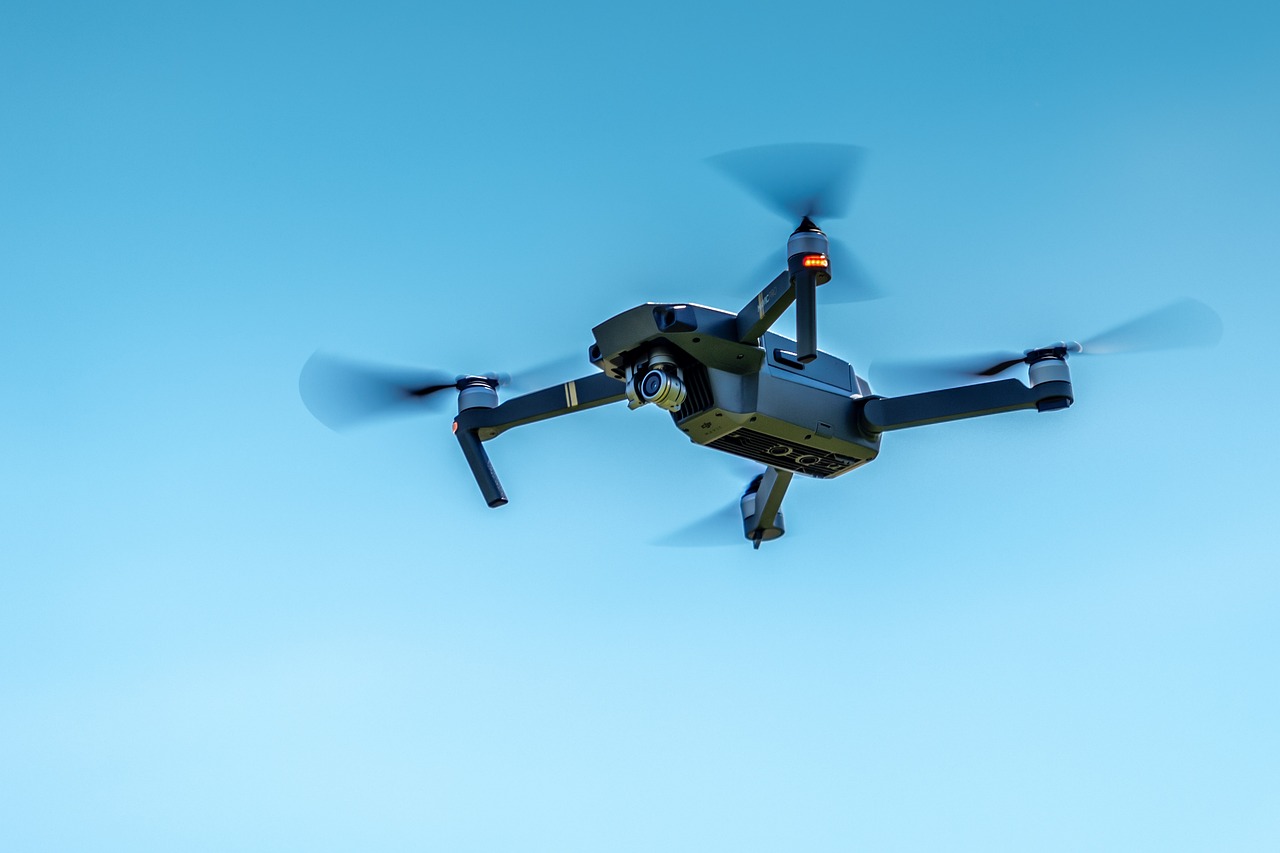
Future Developments
The future of the EAGLE UAV is brimming with possibilities, as ongoing research and development efforts aim to push the boundaries of its combat performance and operational capabilities. As military technology continues to evolve at a rapid pace, the EAGLE UAV is poised to integrate cutting-edge advancements that could redefine its role on the battlefield. One of the most exciting prospects is the integration with other military systems. By collaborating with existing platforms, the EAGLE can enhance its situational awareness and operational synergy, making it an even more formidable asset in combat scenarios.
Imagine a scenario where the EAGLE UAV works seamlessly with ground forces, sharing real-time intelligence and coordinating strikes with precision. This level of integration could be achieved through advanced communication technologies and data-sharing protocols, which allow for a more cohesive operational environment. For instance, if the EAGLE UAV can communicate directly with ground troops and other aerial assets, it could provide critical updates on enemy movements, thus enabling quicker and more informed decision-making. This interconnectedness is not just a dream; it’s a tangible goal that military strategists are actively pursuing.
Moreover, the incorporation of next-generation technologies promises to revolutionize the capabilities of the EAGLE UAV. With advancements in artificial intelligence, machine learning, and sensor technologies, the UAV could become even more autonomous and efficient in executing missions. Picture a UAV that can analyze vast amounts of data in real-time, identifying threats and opportunities without the need for constant human oversight. This would not only enhance its effectiveness in combat but also reduce the cognitive load on operators, allowing them to focus on strategic decision-making rather than mundane data analysis.
Furthermore, advancements in propulsion systems and energy sources could significantly extend the operational range and endurance of the EAGLE UAV. Imagine a UAV that can stay airborne for days, providing continuous surveillance and support without the need for frequent refueling. This capability would transform the dynamics of modern warfare, allowing for persistent presence in contested areas and enabling military forces to maintain an upper hand in intelligence gathering.
As we look ahead, it’s essential to consider the implications of these developments. The potential for the EAGLE UAV to become a cornerstone of future military operations is immense. However, with these advancements come challenges, including the need for rigorous testing and evaluation to ensure reliability and effectiveness in real-world scenarios. The military must also address ethical considerations surrounding autonomous operations, ensuring that human oversight remains a priority.
In conclusion, the future developments of the EAGLE UAV are not just about enhancing its hardware; they also encompass a broader vision of how unmanned systems can integrate into the fabric of military operations. As we embrace these innovations, the EAGLE UAV stands ready to redefine its role in combat, proving that the sky is not the limit, but just the beginning.
- What are the key advancements expected for the EAGLE UAV? Future advancements include integration with other military systems, next-generation technologies, and enhancements in propulsion and energy sources.
- How will integration with other systems benefit the EAGLE UAV? Integration will enhance situational awareness, improve coordination with ground forces, and enable real-time intelligence sharing.
- What role will artificial intelligence play in the future of the EAGLE UAV? AI will enable the UAV to process data autonomously, identify threats, and make decisions, thus increasing operational efficiency.
- Are there any ethical concerns regarding the future use of UAVs? Yes, ethical considerations regarding autonomous operations and the need for human oversight are crucial as technology advances.

Integration with Other Systems
The integration of the EAGLE UAV with other military systems is not just an enhancement; it's a game-changer in modern warfare. Imagine a well-coordinated orchestra where each instrument plays its part perfectly to create a symphony of operational efficiency. This is precisely what happens when the EAGLE UAV collaborates with various military assets. By integrating with ground forces, command centers, and other aerial platforms, the EAGLE can significantly amplify its effectiveness on the battlefield.
One of the key advantages of this integration is the ability to share real-time data seamlessly. For instance, when the EAGLE UAV is deployed alongside ground troops, it can provide live surveillance feeds directly to the commanders. This immediate access to critical information allows for more informed decision-making, ultimately leading to better tactical outcomes. In essence, the EAGLE acts as the eyes in the sky, providing a comprehensive view of the battlefield that ground forces may not have otherwise.
Moreover, the EAGLE UAV can also be integrated with advanced weapon systems. This capability allows for precision strikes based on the intelligence gathered during its reconnaissance missions. By linking its targeting systems with artillery units or other air support, the EAGLE can help ensure that strikes are not only accurate but also timely, minimizing collateral damage while maximizing operational success. The synergy created through this integration is akin to a well-oiled machine, where each component enhances the overall functionality.
To further illustrate the importance of integration, consider the following table that outlines the various systems the EAGLE UAV can connect with, along with the benefits of each integration:
| Integrated System | Benefits |
|---|---|
| Ground Forces | Real-time data sharing, improved situational awareness, enhanced tactical decision-making |
| Command Centers | Centralized control, streamlined communication, rapid response capabilities |
| Other UAVs | Coordinated operations, enhanced surveillance coverage, reduced risk of friendly fire |
| Weapon Systems | Precision targeting, timely strikes, reduced collateral damage |
As military operations evolve, the need for interoperability among various systems becomes increasingly crucial. The EAGLE UAV stands at the forefront of this evolution, showcasing how modern technology can be harnessed to create a cohesive and efficient combat environment. By enabling different military assets to work together, the EAGLE not only enhances its own performance but also contributes to the overall success of military operations.
- What is the primary role of the EAGLE UAV in military operations?
The EAGLE UAV primarily serves as a surveillance and reconnaissance platform, providing real-time intelligence to ground forces and command centers. - How does the EAGLE UAV enhance communication between units?
It shares live data feeds and intelligence, allowing for better coordination and decision-making among various military units. - Can the EAGLE UAV operate in adverse weather conditions?
Yes, the EAGLE UAV is designed to perform in a variety of environmental conditions, although extreme weather may still pose challenges. - What are the advantages of integrating the EAGLE UAV with weapon systems?
Integration allows for precision targeting and timely strikes, which can significantly reduce collateral damage and increase mission success rates.

Next-Generation Technologies
The landscape of warfare is constantly evolving, and with it, the technologies that empower military assets like the EAGLE UAV. As we look to the future, the integration of into the EAGLE UAV promises to significantly enhance its combat performance and operational capabilities. Imagine a UAV that not only gathers intelligence but also makes autonomous decisions based on real-time data analysis. This is the direction in which military technology is heading.
One of the most exciting advancements is the development of artificial intelligence (AI) systems that can process vast amounts of data faster than any human operator. These AI systems can analyze patterns and predict enemy movements, providing military strategists with invaluable insights. For instance, if the EAGLE UAV detects unusual activity in a specific area, its AI could alert ground forces and suggest tactical responses based on historical data. This capability allows for a level of situational awareness that was previously unimaginable.
Moreover, the incorporation of swarming technology is another game-changer. This involves deploying multiple UAVs that can communicate and coordinate with each other in real-time. Picture a scenario where several EAGLE UAVs work together to create a comprehensive surveillance net over a combat zone. They could share data, cover more ground, and respond to threats more effectively than a single UAV ever could. This kind of teamwork can significantly enhance operational efficiency and effectiveness.
Additionally, advancements in sensor technology are set to revolutionize the EAGLE UAV's capabilities. Future iterations may include multi-spectral sensors that can operate across various wavelengths, allowing for better detection of hidden threats, whether they be camouflaged troops or concealed weaponry. These sensors will not only improve reconnaissance missions but also enhance the UAV's ability to conduct target acquisition with pinpoint accuracy.
To further illustrate the potential impact of these technologies, consider the following table that outlines some of the next-generation enhancements that could be integrated into the EAGLE UAV:
| Technology | Potential Impact |
|---|---|
| Artificial Intelligence | Enhanced data analysis and autonomous decision-making |
| Swarming Technology | Improved operational efficiency through coordinated missions |
| Multi-Spectral Sensors | Better detection capabilities across various combat situations |
| Advanced Data Encryption | Increased security for data transmission and communication |
As we explore these advancements, it’s essential to recognize that with great power comes great responsibility. The integration of these technologies raises ethical questions about the autonomy of UAVs in combat scenarios. How much decision-making should be delegated to machines? As military forces grapple with these questions, the EAGLE UAV stands at the forefront of a technological revolution that could redefine modern warfare.
In conclusion, the future of the EAGLE UAV is bright, with next-generation technologies poised to enhance its performance significantly. Whether through AI, swarming capabilities, or advanced sensors, these innovations will not only improve operational effectiveness but also ensure that military forces remain a step ahead in the ever-changing battlefield landscape.
- What is the primary advantage of integrating AI into the EAGLE UAV?
AI allows for faster data processing and autonomous decision-making, enhancing situational awareness and responsiveness in combat scenarios. - How does swarming technology improve UAV operations?
Swarming technology enables multiple UAVs to work together, covering more ground and responding to threats more effectively than a single unit. - What types of sensors are expected to be integrated into future EAGLE UAVs?
Future models may include multi-spectral sensors for improved detection capabilities across various combat situations. - Are there ethical concerns regarding autonomous UAVs?
Yes, there are significant ethical questions about the level of decision-making that should be delegated to machines in combat scenarios.
Frequently Asked Questions
- What are the primary capabilities of the EAGLE UAV in combat?
The EAGLE UAV is designed for multiple roles including surveillance, reconnaissance, and combat support. Its advanced sensors and real-time data processing capabilities allow it to gather critical intelligence and support ground troops effectively during military operations.
- How does the EAGLE UAV compare to other UAVs on the market?
The EAGLE UAV stands out due to its unique blend of performance, versatility, and reliability. It offers cost-effective operational capabilities and is adaptable to various environments, making it a preferred choice in many combat scenarios.
- What are the limitations of the EAGLE UAV?
While the EAGLE UAV is a powerful tool, it does have limitations. Technological constraints can affect its operational effectiveness, and environmental factors such as adverse weather conditions and challenging terrains can hinder its performance in the field.
- What future developments are planned for the EAGLE UAV?
Future developments for the EAGLE UAV include potential upgrades in technology and integration with other military systems. Ongoing research aims to incorporate next-generation technologies that will enhance its capabilities and performance in future combat scenarios.
- How does the EAGLE UAV process and analyze data?
The EAGLE UAV utilizes advanced data processing technologies to analyze the information it collects in real-time. This capability is crucial for effective decision-making, allowing military personnel to respond quickly to dynamic combat situations.
- Can the EAGLE UAV operate in diverse environments?
Absolutely! The EAGLE UAV is designed to adapt to various terrains and combat situations, making it suitable for operations in different environmental conditions. Its versatility is one of its key strengths in military applications.
- What types of sensor technologies are used in the EAGLE UAV?
The EAGLE UAV is equipped with a range of advanced sensors that enhance its intelligence-gathering capabilities. These sensors are crucial for effective surveillance and reconnaissance missions, providing detailed insights into the operational environment.


